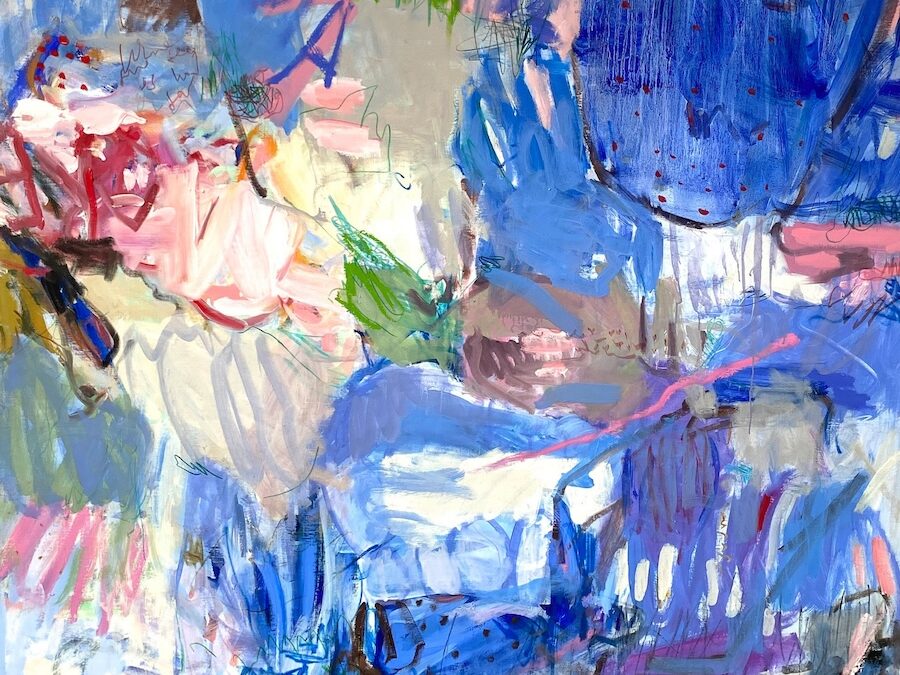Petra Schott is a German abstract painter working predominantly with oil paints. She has studied Fine Arts in Germany and pursued her artistic career over a long period. For many years, she also worked as a judge and lawyer, before abandoning the legal field altogether in 2014. Since then her art has grown and intensified and she has masterly developed her own unmistakable painterly language. In abstract shapes, colours and lines she explores her female view onto her daily life, fearlessly integrating fragmented parts of her surrounding reality.
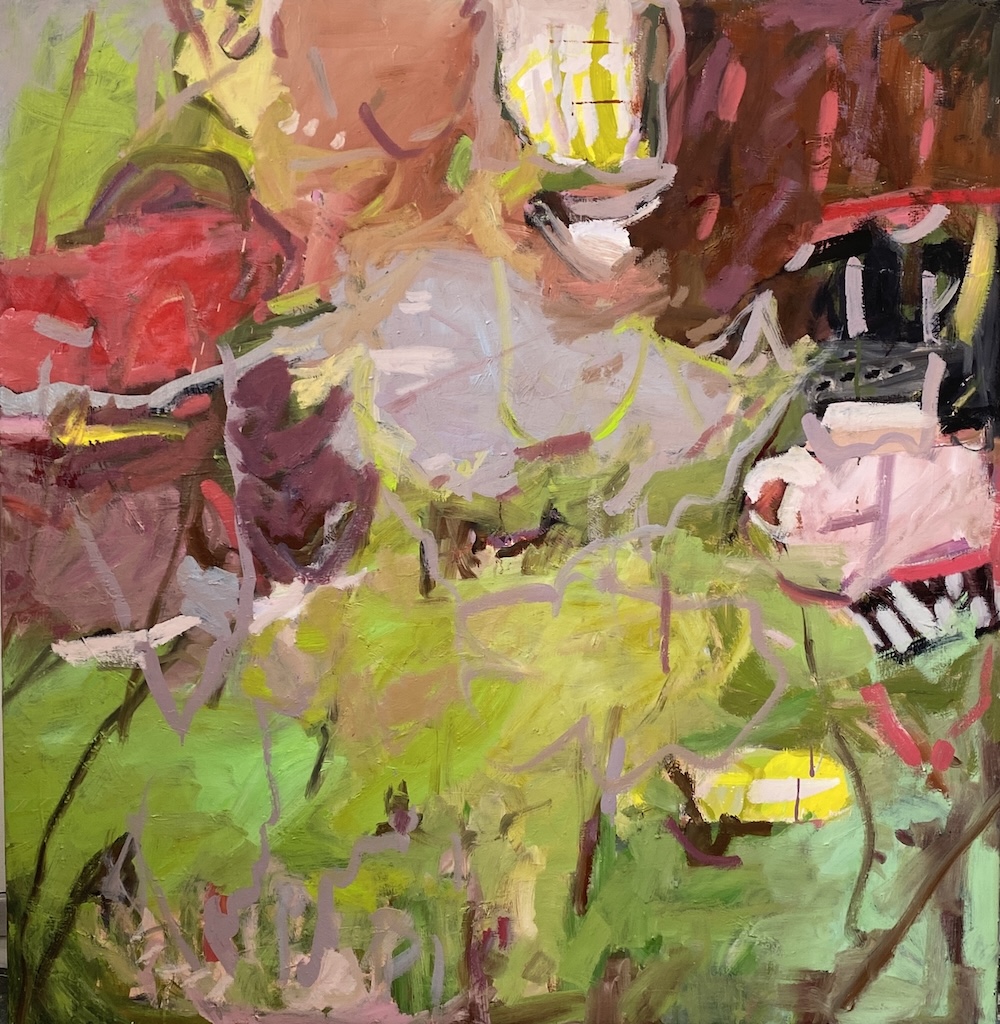
For Petra, nature is a source of inspiration as well as her everyday life with its questions, experiences and insecurities. In her work she also relates to other artists she admires. For instance, her Venus series was inspired by the work of Cy Twombly, however developing a female view and asking if Venus shouldn’t have a break from representing beauty and love. Petra also uses poetry and literature as an inspiration to sharpen her artistic view. So, she has created two series based on poetry of Mary Oliver. Petra is represented by several galleries internationally and has exhibited her work regularly in many countries.
What’s your artistic background?
Art was not my main interest at school. It was only in my twenties, when I had started studying law that I discovered my love for painting. It was during the stress of the exams’ period that I felt the strong urge to do something with my hands and allow my brain to rest. I rediscovered a watercolour set and from then on started painting when coming home from the legal seminar. This were very simple and naive studies I pursued, just painting the view from my window or copying some aquarelles from August Macke or Paul Klee. But I liked it and felt that this work was balancing my whole being. After my second law exam, I decided to dive deeper into the arts and studied Fine Arts for four years at an academy in Kassel, Germany. However, I didn’t complete this studies with a degree. Later, I have done a four years masterclass with the well-known painter Leiko Ikemura. I have acquired a lot of experience and knowledge simply by practising a lot in the past thirty years. A lot of my language as a painter has developed over time by practising, being aware and spending time in in my studio painting for so many hours.
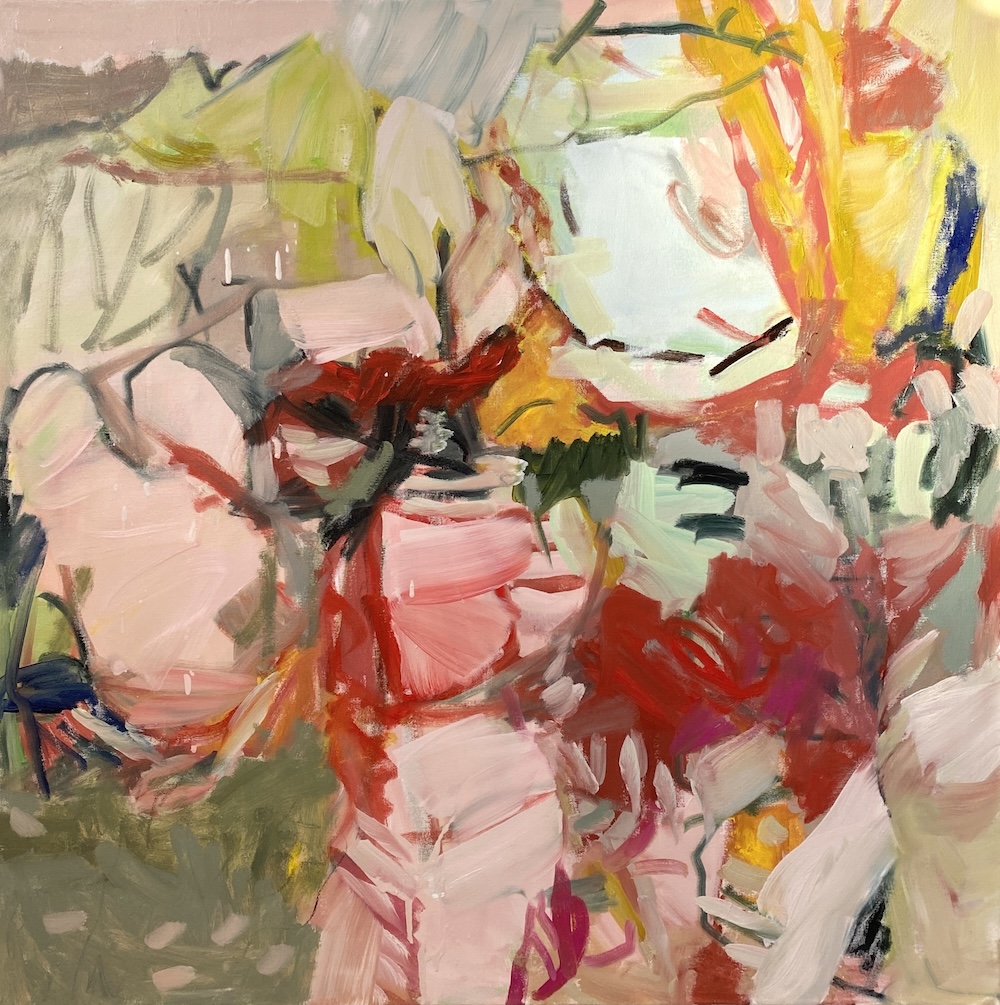
What’s integral to the work of an artist?
For me it is the need to express all that cannot be expressed in words. It is also a need to explore the more unconscious parts of my being in order to understand and heal and become whole. I think an artist has to be sensitive and feel an urge to discover and experiment and strive for an authentic expression of emotions, ideas, visions and magic in ones life. It is this exploration of artistic freedom being a sort of engine for traveling further and further in art an artist has to have.
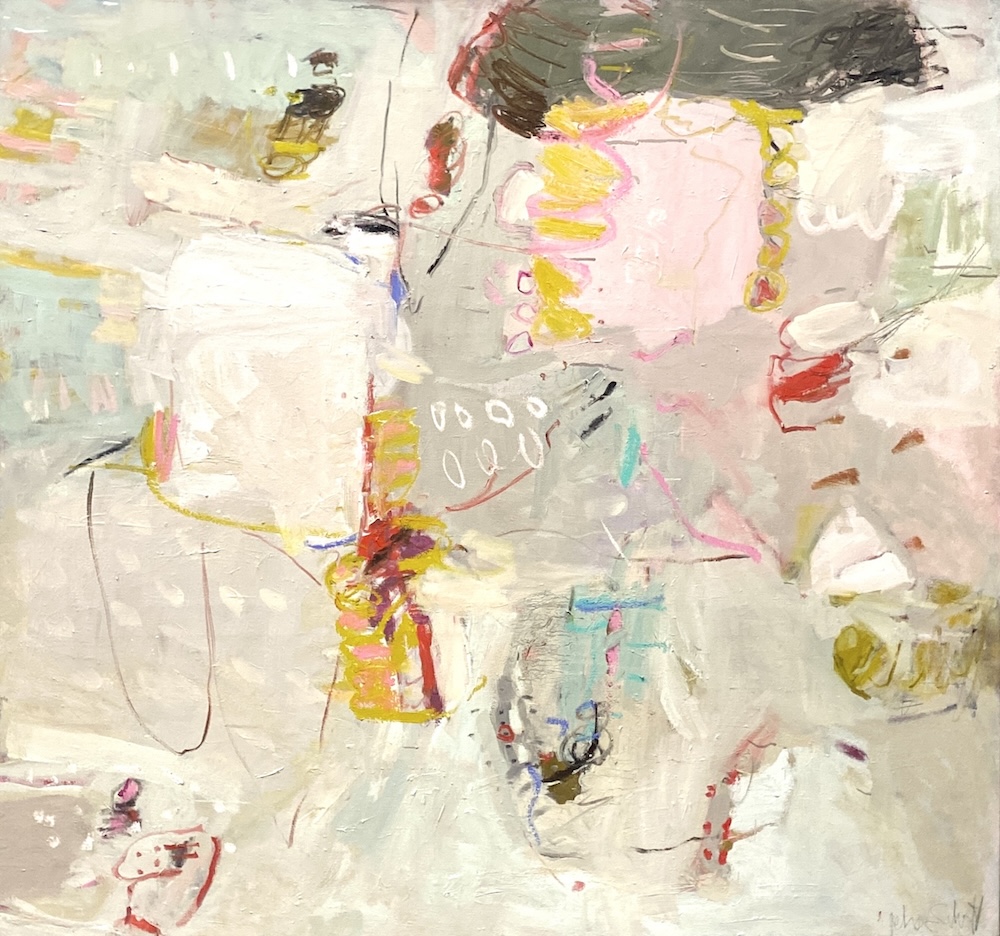
What role does the artist have in society?
I think there is no generalized role in society for an artist. It would be presumptuous to define such a role for every artist. I think every artist has to explore for himself which role he wants to play in society. For me, all the artist can do for society is doing the things s/he needs to do and doing them with a permanent awareness and sensitivity. It is about being responsible and authentic and weaving further the carpet of human consciousness. My main interest is exploring a world of freedom and intensity beyond words and I hope to make our lives richer by doing so. But even if not I would continue painting, because for me it has become like breathing.
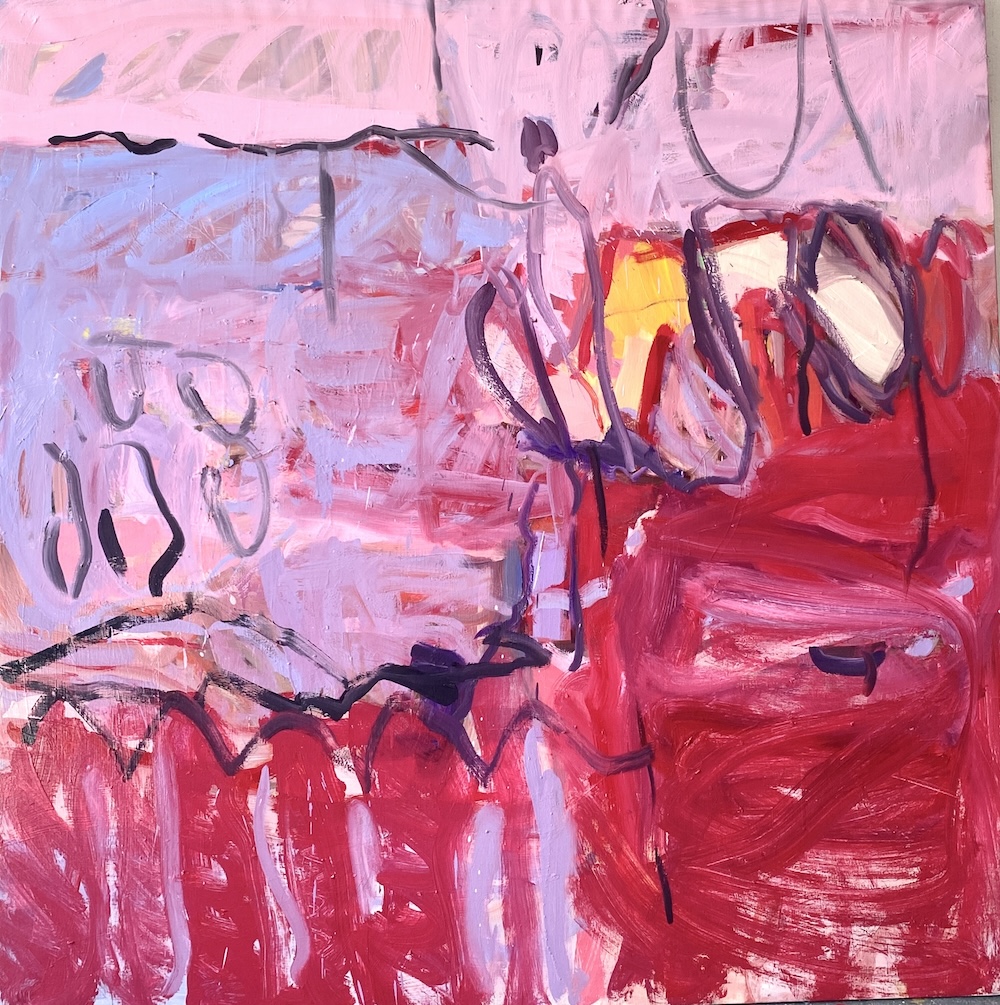
What art do you most identify with?
I am an abstract painter, so abstract art is the domain I most identify with. During my life I have gone through periods of figurative painting, but over the years I have explored the abstract language further and further. Sometimes some figurative allusions appear like fragmented parts of reality. Sometimes I integrate them into my paintings, sometimes I overpaint them. I feel that abstract art allows me to paint freely without having to represent something recognisable. Thus, associations can float freely and open new spaces of inner life.
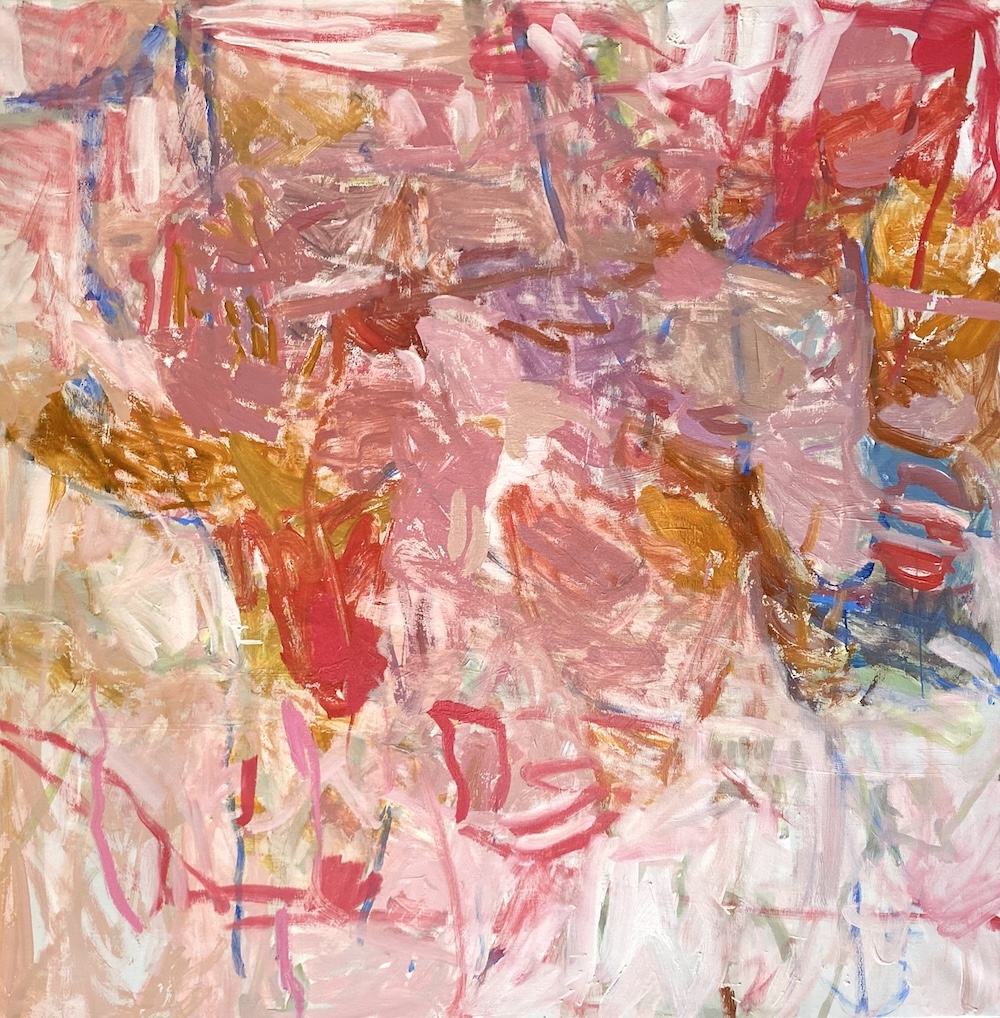
What themes do you pursue?
My themes are nature – a constant source of inspiration – and my life as a woman in this period of time. All my experiences in everyday life make their way into my paintings, sometimes consciously, sometimes I see them popping up as a little greeting from my subconscious. I embrace them all- but not all remains visible on the surface. As I love to hike in nature, my experiences have become visible among others in my series called ‚Magical walks‘. Connecting to nature for me is a way to connect to myself and reconnect to the source. Also, being a woman has influenced my art because all my experiences, colour preferences, visions, longings and so on make their way into my paintings. Though I am an abstract painter the female body often has been a source of inspiration. It can be seen from outside, but what interests me more is in which way I can feel it from inside. For me it feels as if the more I become whole in the sense of fully accepting myself, the more my paintings can be an authentic expression of my life. But this is of course a path with an open end. It depends on how much energy and time and self-reflection I put into painting and what tools I am able to use to develop my art further, like teachings, mentors, talk with other artists, finding the right medium and others.
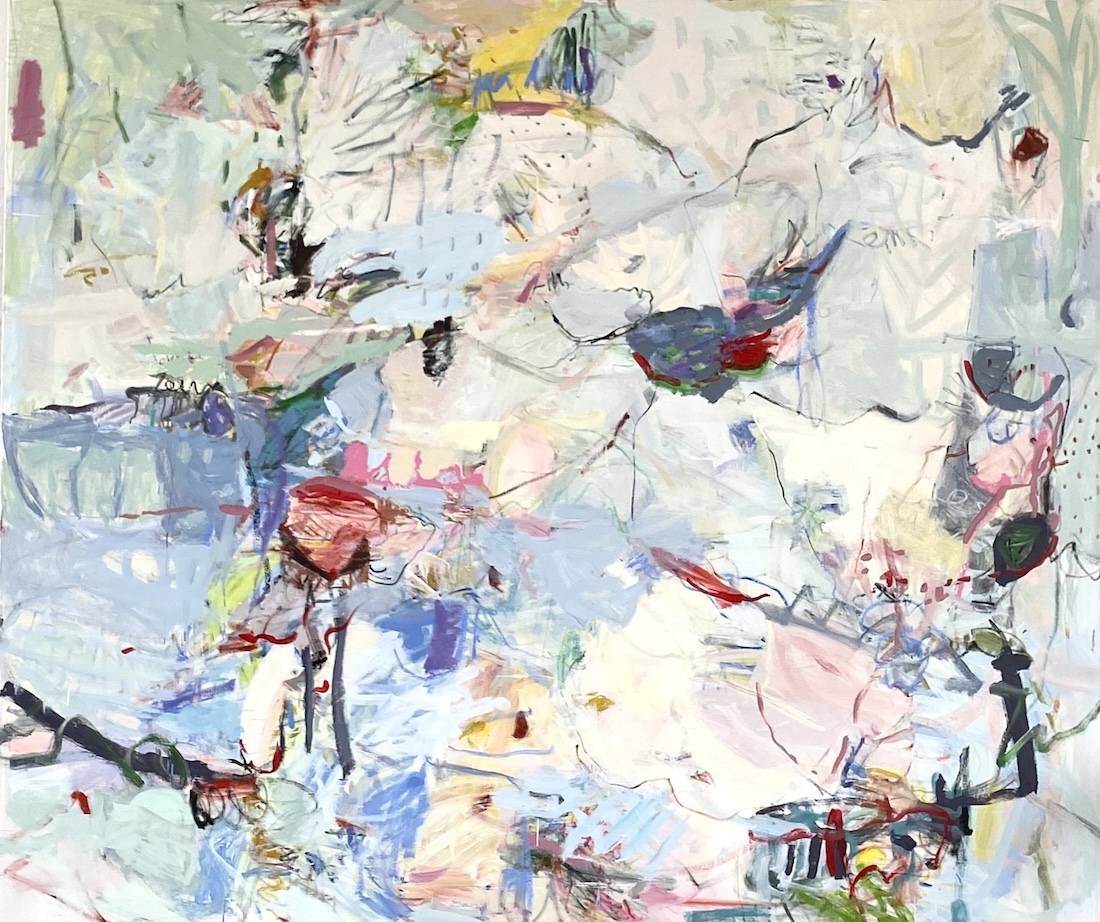
What’s your favourite art work?
I have not only one favourite art work and my preferences have changed over time. And even now, there are many artworks I love. One of my early fascinations was with the work of Cy Twombly: he has been a source of ongoing inspiration. His elegant use of scribbles, poems and mythology, his reduction of colour and the fact that his works do not end at the physical end of a painting but somehow expand into the room have fascinated me. Twombly’s Venus series was the starting point for my own Venus series questioning her mission of representing beauty and love. I also love Tracey Emin’s work for her incredible capacity to face her emotions and share them in her paintings. I love Martha Jungwirth for the freedom in her compositions. I like Cecily Brown for the intensity and denseness of her work. And there are many others.
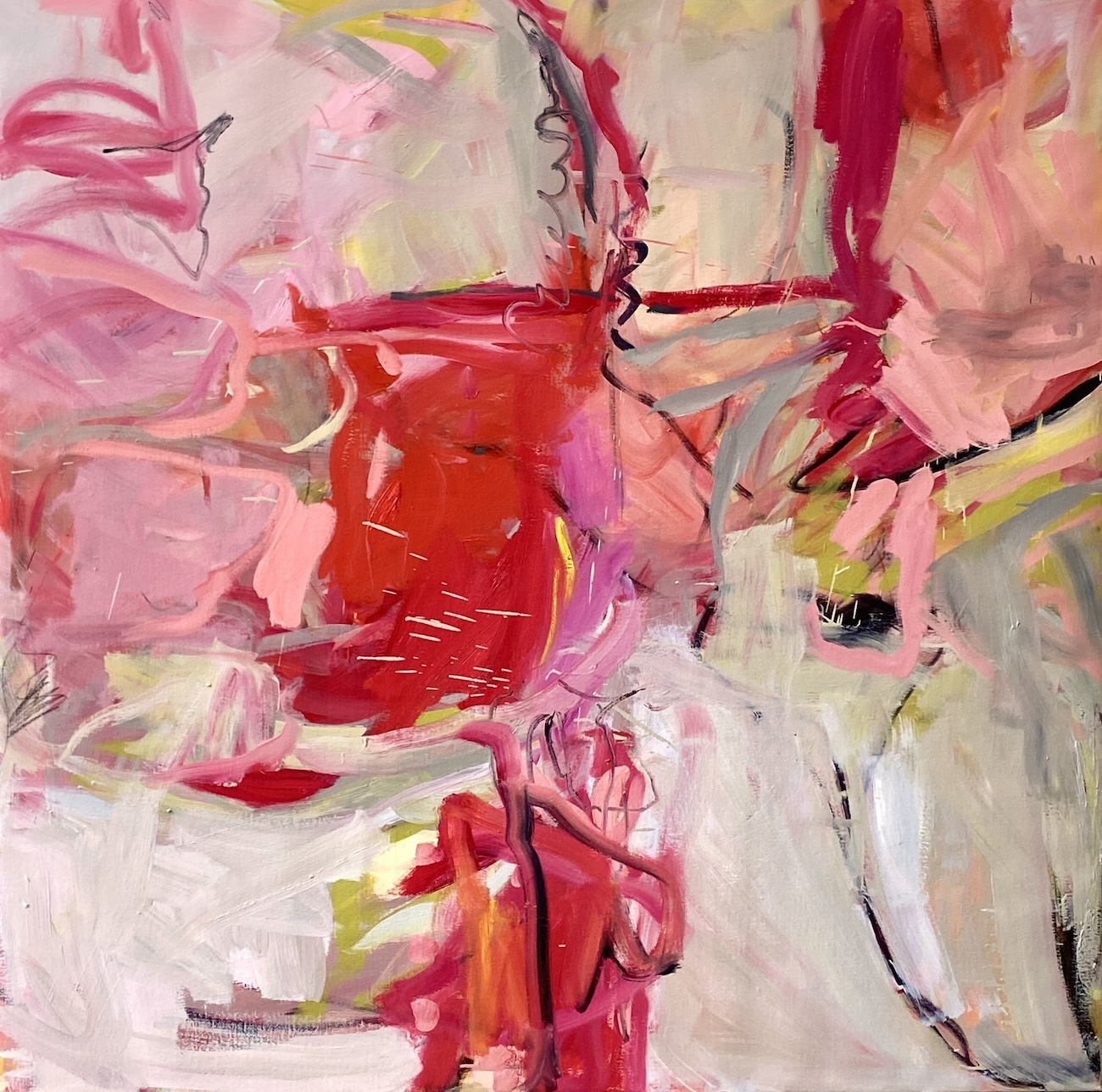
Describe a real-life situation that inspired you?
There are many real-life situations that inspired me. It might be walking through a landscape and enjoying the greens and the view, it might be a beautiful red hue I find inspiring or I am inspired by one of my own paintings, giving me the idea of starting a new piece. Seeing the work of other artists is very inspiring at times, too. In my studio I have a selection of poems by Mary Oliver who also is a source of constant inspiration for me. I have catalogs of other artists in my studio to browse through when I feel stuck and I have a lot of music at hand in my studio to put me in the right mood.
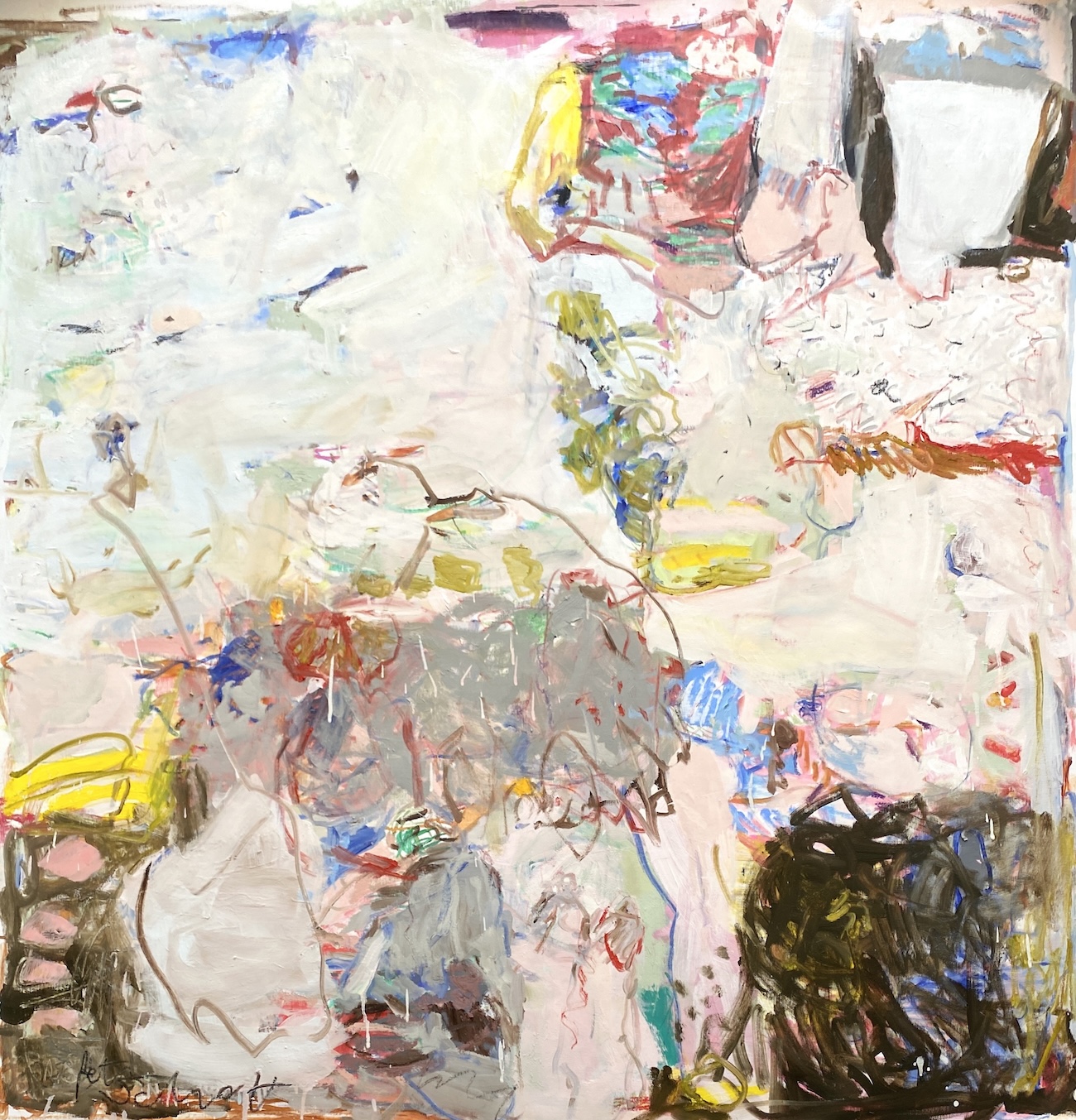
What jobs have you done other than being an artist?
As I said, after my high school degree I studied law and completed it. After my time at the art academy I had to take a difficult decision, namely how to earn my further livelihood. I chose to rely on my law degree as a safe source of income and not on my painting skills. I always wanted to be financially independent from a partner and be able to raise children. So for many years I worked as a judge at several courts in Germany. I also worked as a lawyer for the European Commission in Brussels. This work going along with a lot of rational thinking, arguing and careful formulations of course has intensely shaped parts of me. In order to balance my life I have come to love wild and free movements in my painting without explaining it in words. It felt like a real need to paint during this time of working in the legal field- and I have pursued my painting studies and taken part in exhibitions also during these times. In 2014 I stopped working in the legal field altogether and have since then exclusively worked as an artist. I cannot say how much I enjoy having time to paint every day and be in my studio. It has made my art more intense and my life more joyful and it has made it easier to create a cohesive body of work.
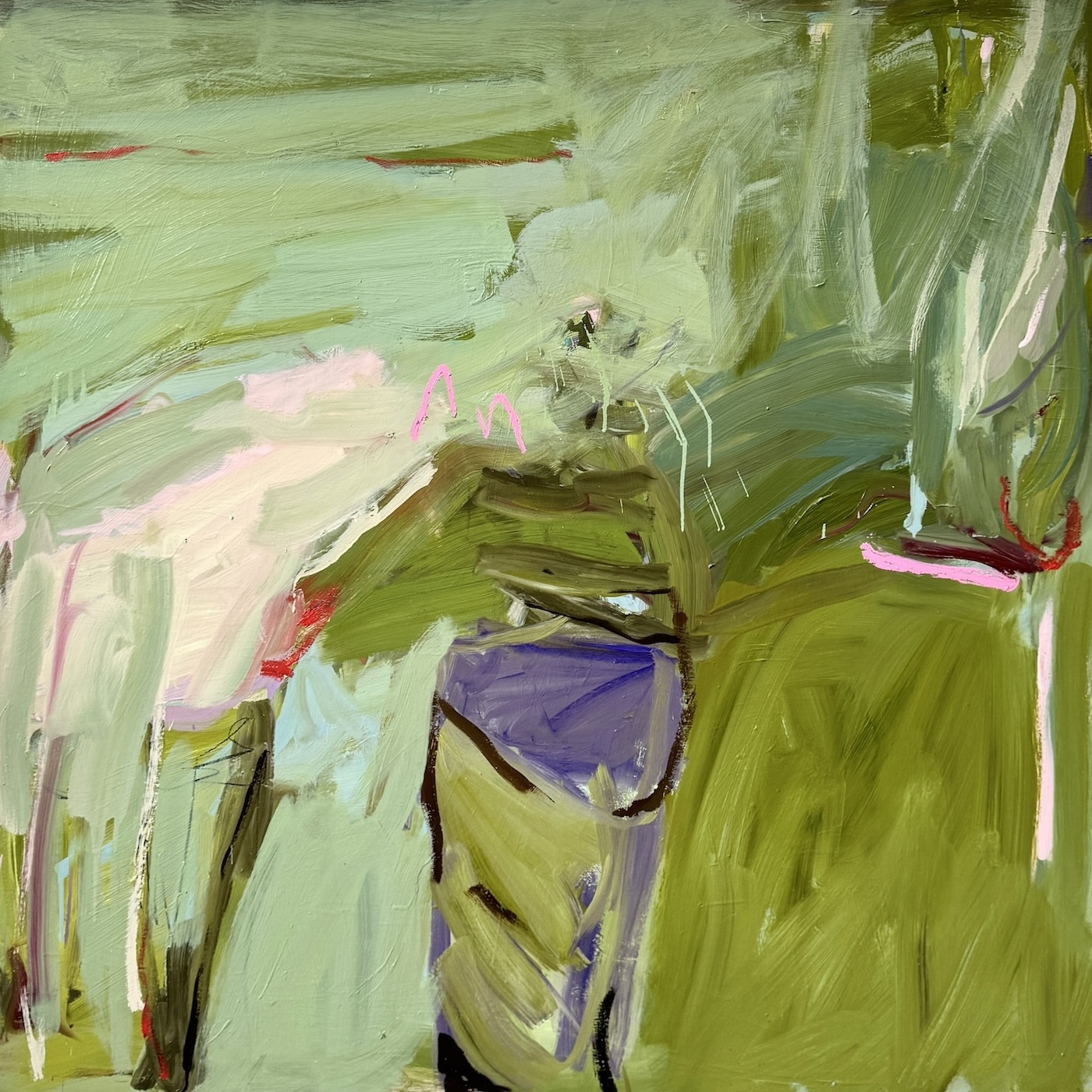
Why art?
Art explores a realm beyond everyday experiences and language and we all need this space. If it is music or poetry, writing, dancing or theatre, all these forms of art go beyond our everyday experiences and can transform our lives. I like to cite Arno Geiger, a German writer, who said: Art does not save us from chaos but from order. We all have to function in everyday life, we have to structure our time and obey to a lot of rules. But in art there are no rules, in my paintings I can explore chaos and the full range of emotions. Art can make us free. These experiences can also free our thinking and may make us see new options in our life.
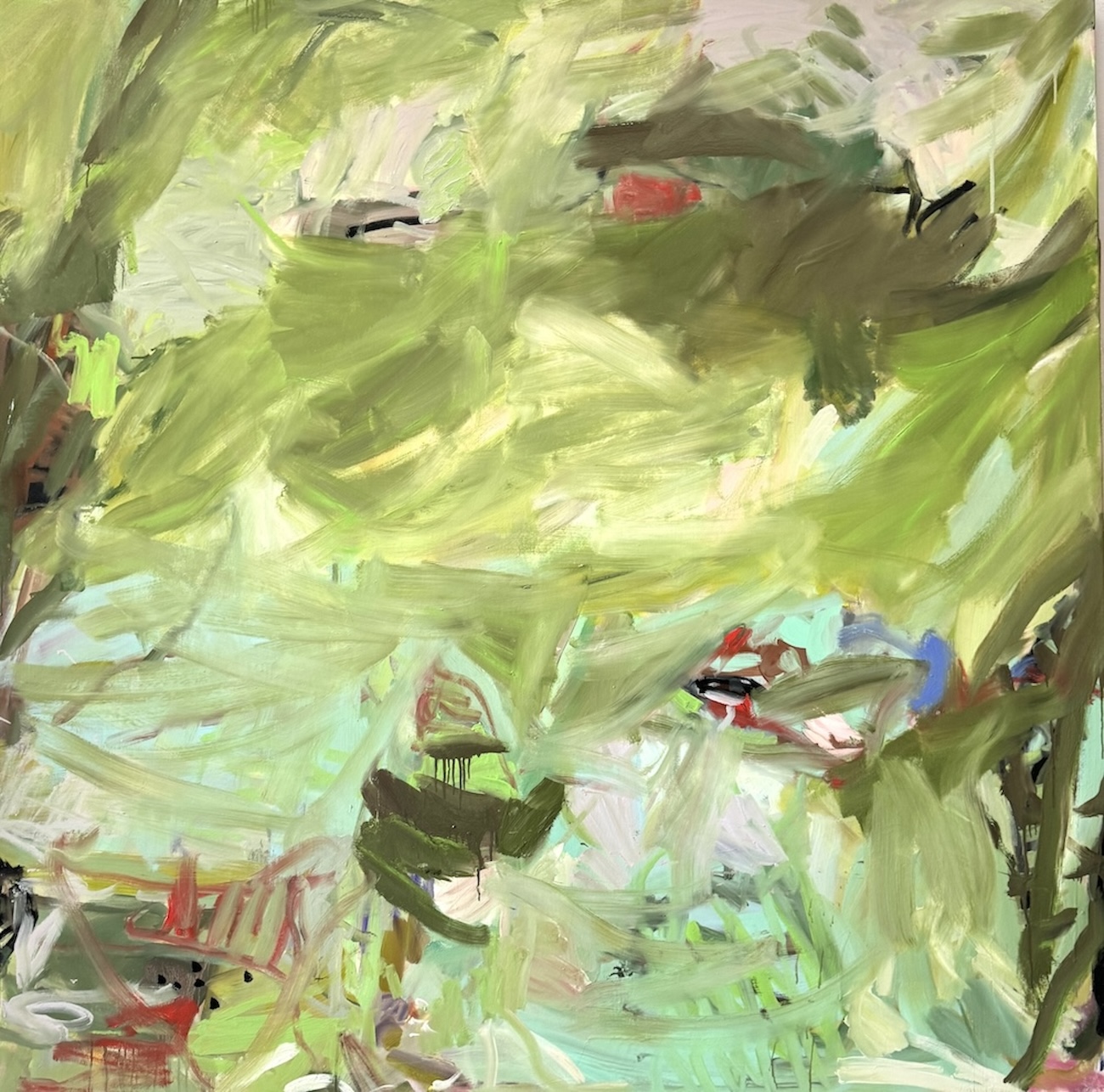
What is an artistic outlook on life?
For me, it is an ever changing outlook. Being an artist first of all means to be able to be creative and this is a huge source of pleasure and gratefulness in my life. An artistic outlook means to further develop sensitivity and awareness, to experiment and expand my skills. As an artist I permanently transform things: I see something physical and I transform it into something abstract. This transformative work also shapes my outlook on life and makes me more calm and patient in everyday life. I love my life as an artist because there is a lot of freedom involved.
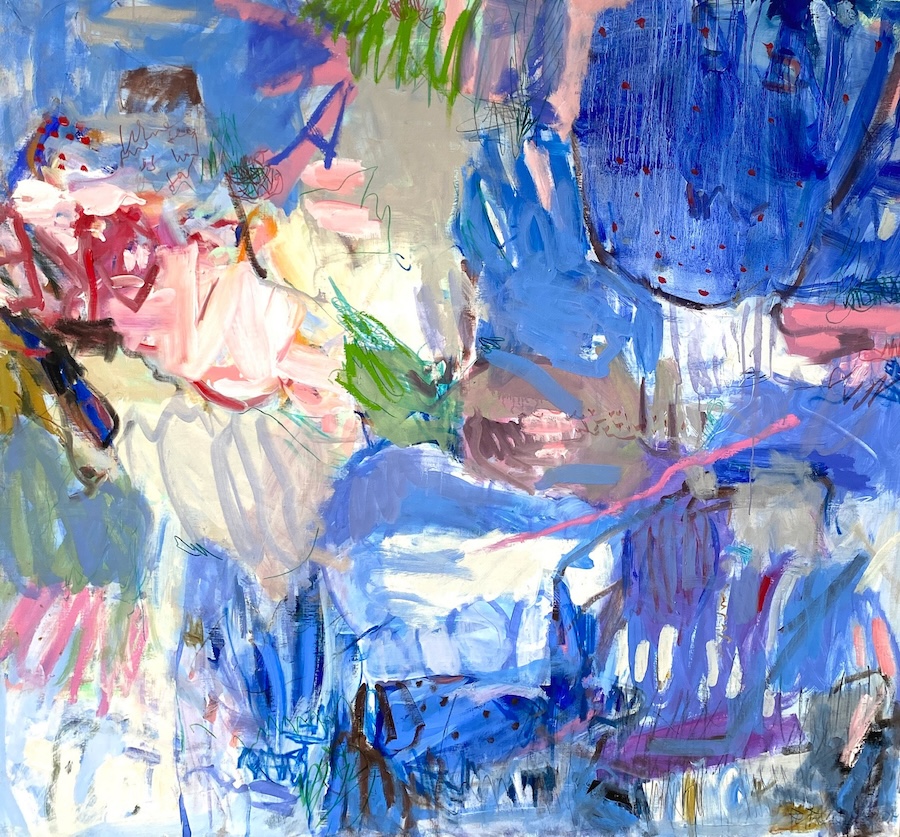
What memorable responses have you had to your work?
Oh, I had everything from ‚this is child play and chaos‘ to ‚this is a masterpiece‘. I try to remain independent from judgement – though this is difficult at times. I have had lovely comments from collectors sending me photos of the place my artwork has found and describing how much they like the new atmosphere in the room. Of course, I very much like to know the new home of my work. During exhibitions I find it very difficult to be asked: what have you thought while painting? Often I didn’t think that much while painting, it was more being aware what the painting wanted me to do to support the expression. If I am really absorbed in painting, it is like a total flow, a dance and I don’t think. But of course I understand that abstract paintings are not always easy to ‚understand‘ or relate to. So, as an answer, I talk about the process with this painting.
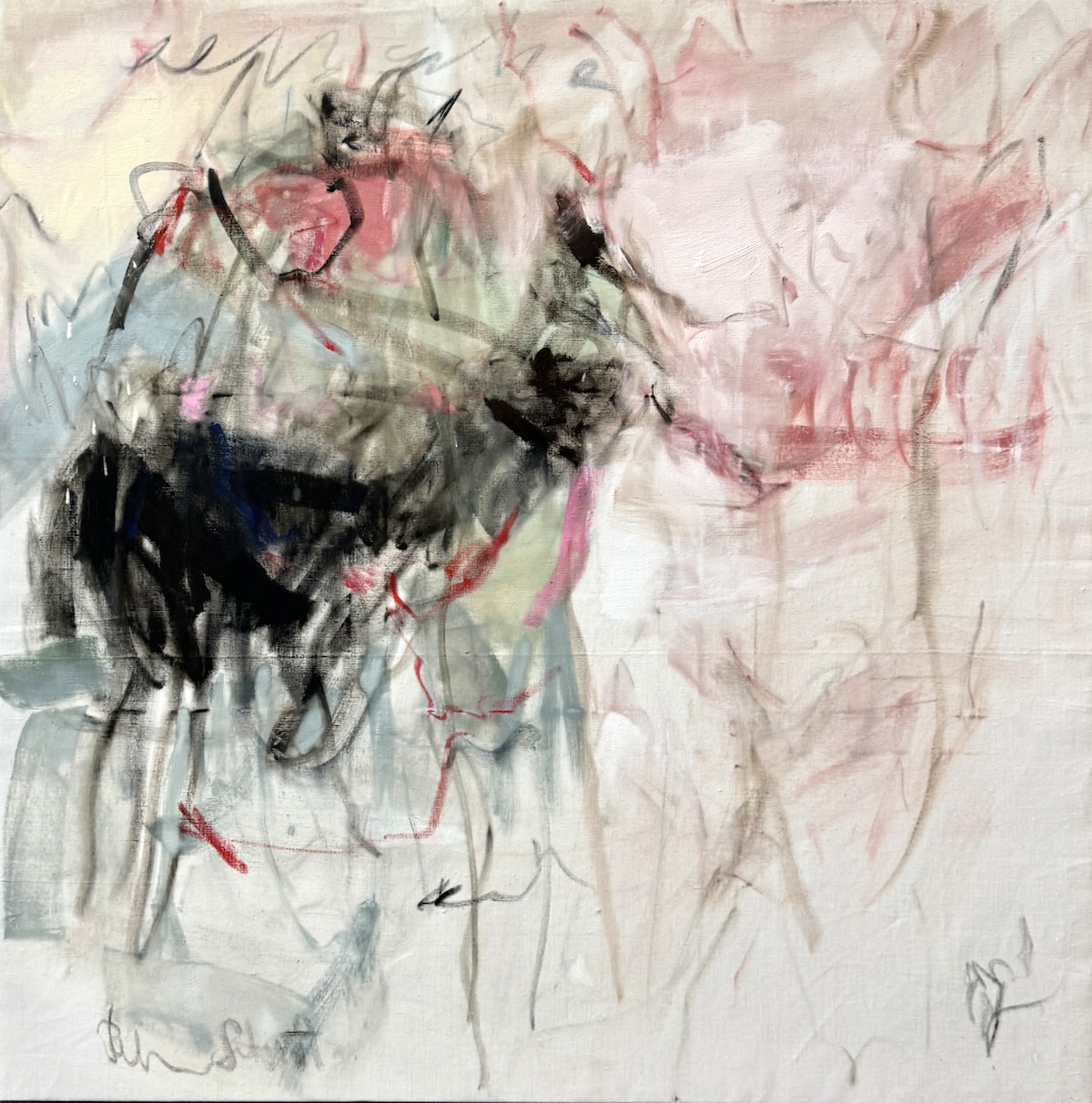
What food, drink, song inspires you?
I think food or drink haven’t inspired me that much so far, though I very much enjoy good food like Indian or Italian food! But music is a huge source of inspiration. In my studio I nearly always listen to music. Music puts me in a certain space and helps me to open up and be in the present moment. I like a wide range of music and I choose it depending on my mood. I like jazz music and Indian raga music, at times it is folk music, minimal music, The Beatles, Pink Floyd or Joan Armatrading and sometimes it is classical music. Sometimes I need a very soft, meditative, wide space in music without strong rhythms, sometimes I love to listen to rhythmic songs and start dancing in my studio. Dancing can be wonderful to loosen up and become more fluid and light – an ideal preparation for painting!

Is the artistic life lonely? What do you do to counteract it?
I think it is lonely- at least as a painter, but I love it. You are in your studio and you paint. You forget everything around you and you delve deep into colours and shapes and lines. When I am in my studio, I don’t miss anything. Nevertheless, I try to seek a balance in pursuing a social life too by meeting up with other artists and friends. I am also member in some art associations which can help networking and exchanging. During Covid I started using Instagram as a professional tool, because physical exhibitions were no longer possible. And I discovered that I like the exchange with other artists around the world made possible through social media.

What do you dislike about the art world?
I dislike that the art world in parts is about marketing and big money. It is a real big business where not the artistic values and quality is key but the market value. Also, I dislike the in-transparencies of this market. To me it seems to be governed by collectors, big galleries and museums, whereas the artists at the source of it all are not included.
What do you dislike about your work?
There are some parts I don’t like that much, that is self-management in the broadest sense, writing statements, archiving and accountancy. There are other parts I have out-sourced, namely packaging, customs and choosing a carrier in case I have to ship work: a company is doing it for me. Also, approaching galleries in order to ask if they are interested in my work is not my favourite occupation. I try to reserve a specific time for this work and try to get it done quickly.

What do you like about your work?
I very much like that my art is an ever developing field of expression and experience. I like to be surprised by new ideas in my art and new mediums, forms and shapes developing. I like that painting allows me to discover new forms of expression and that my art can grow and mature in the way I do. I like that my means of expression allow me to create beauty, softness and intensity and that is has opened up a whole new space of sensuality. I very much like the freedom I feel when painting.
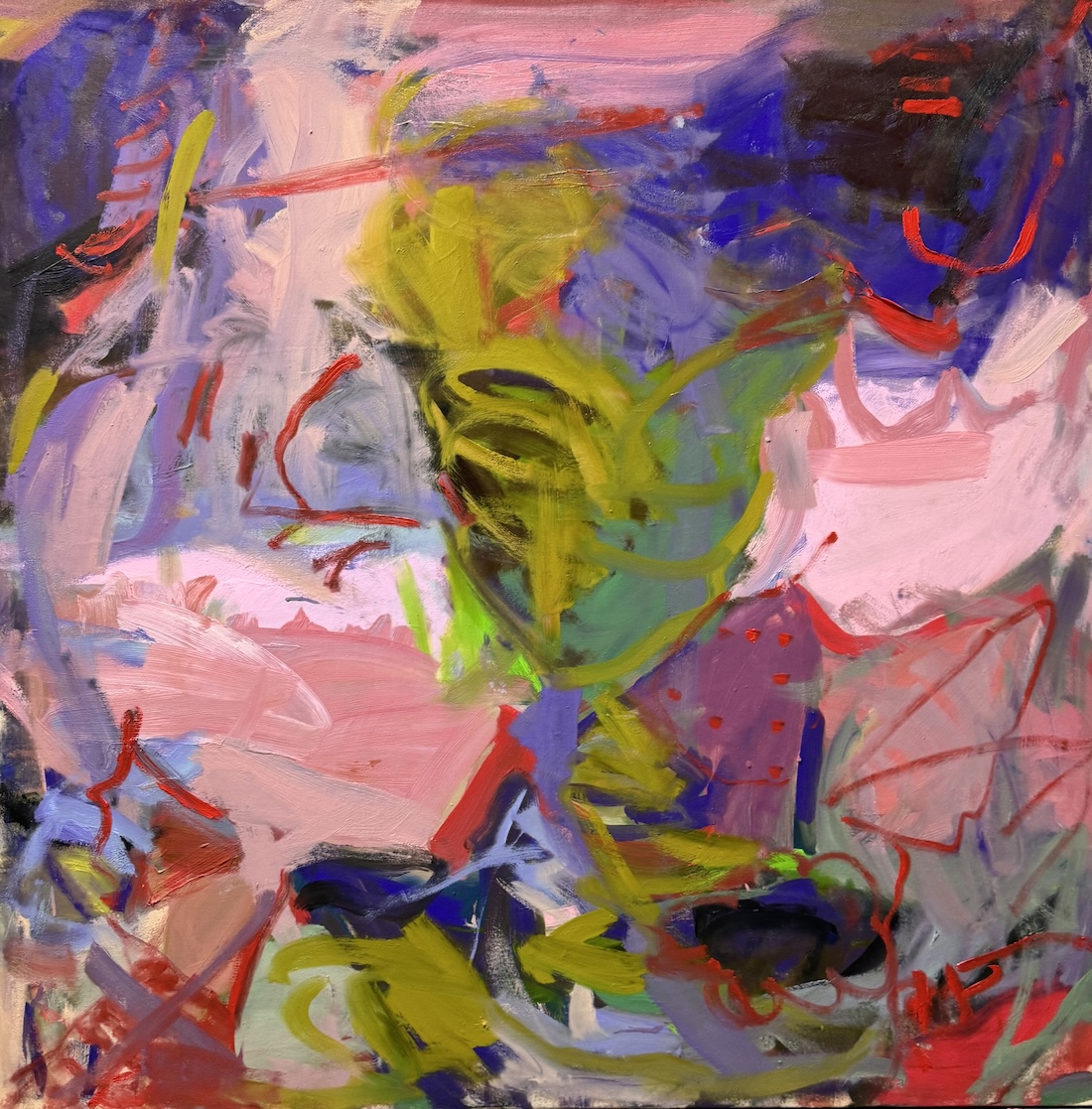
Should art be funded?
Art is funded already in many ways and this is necessary. Many museums are funded by public money. Also, artists are funded in certain situations and this is important. But of course not all art can be funded. As art is an important part of our cultural wealth and identity, art and artists should be supported by funding. Funding can help an artists to make the starting steps into an art career and overcome the first time with no income. Funding is a sort of recognition like a an award or a prize and it can help to make an artist’s work more public. In my view, it would already be a good start to offer an artist a sort of payment for an exhibition, because very often the artist doesn’t receive anything in case nothing is sold and he has to bear the costs of transportation on top.
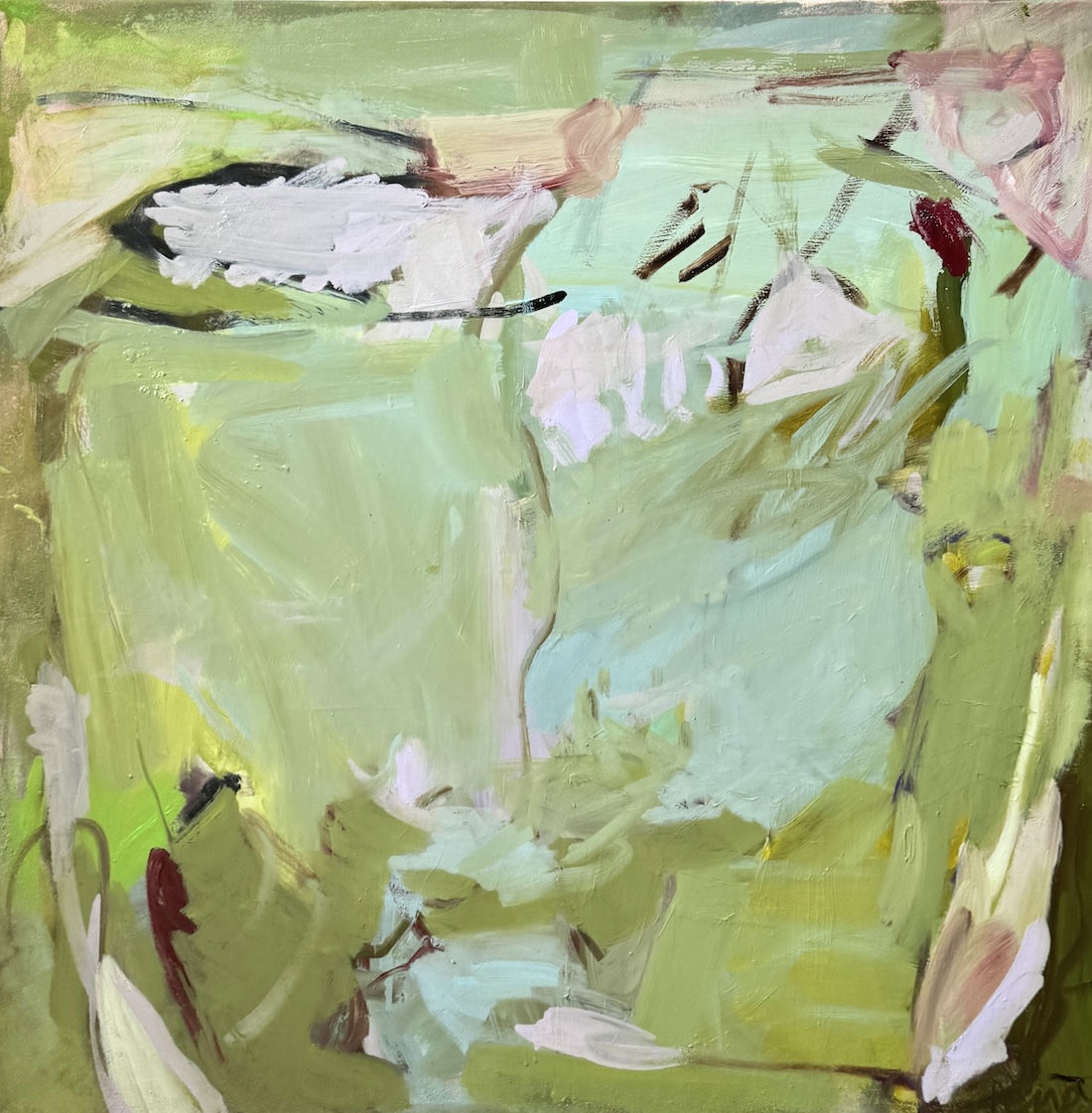
What role does arts funding have?
Funding for me means that artists have financial stability for a certain time to develop their work. Regular funding with public means is a way of recognition that creating art means a lot for society. Often, art by young artists needs some time to establish itself in the art world. To bridge this time, funding can be a great help.
What is your dream project?
I am very grateful for what I have achieved and many dreams have come true. I am grateful for my collectors and the recognition I have received. However, there are some dreams left: one of my dream projects would be creating big artworks in a really big studio without limitations of space and then having a gallery or museum presenting this work. So, I would need an even bigger studio and a gallery supporting this specific work by offering big walls – both a dream!

Name three artists you’d like to be compared to.
I have some artists I really love and admire. For me they are an inspiration: there are De Kooning, Tracey Emin and Cy Twombly. However, I would never allow myself to think I could be compared to them- I guess, I could only loose in such a comparison!. But I see links in my work referring to them and I see my art growing on what they have achieved. In that sense I see relatedness to their work.
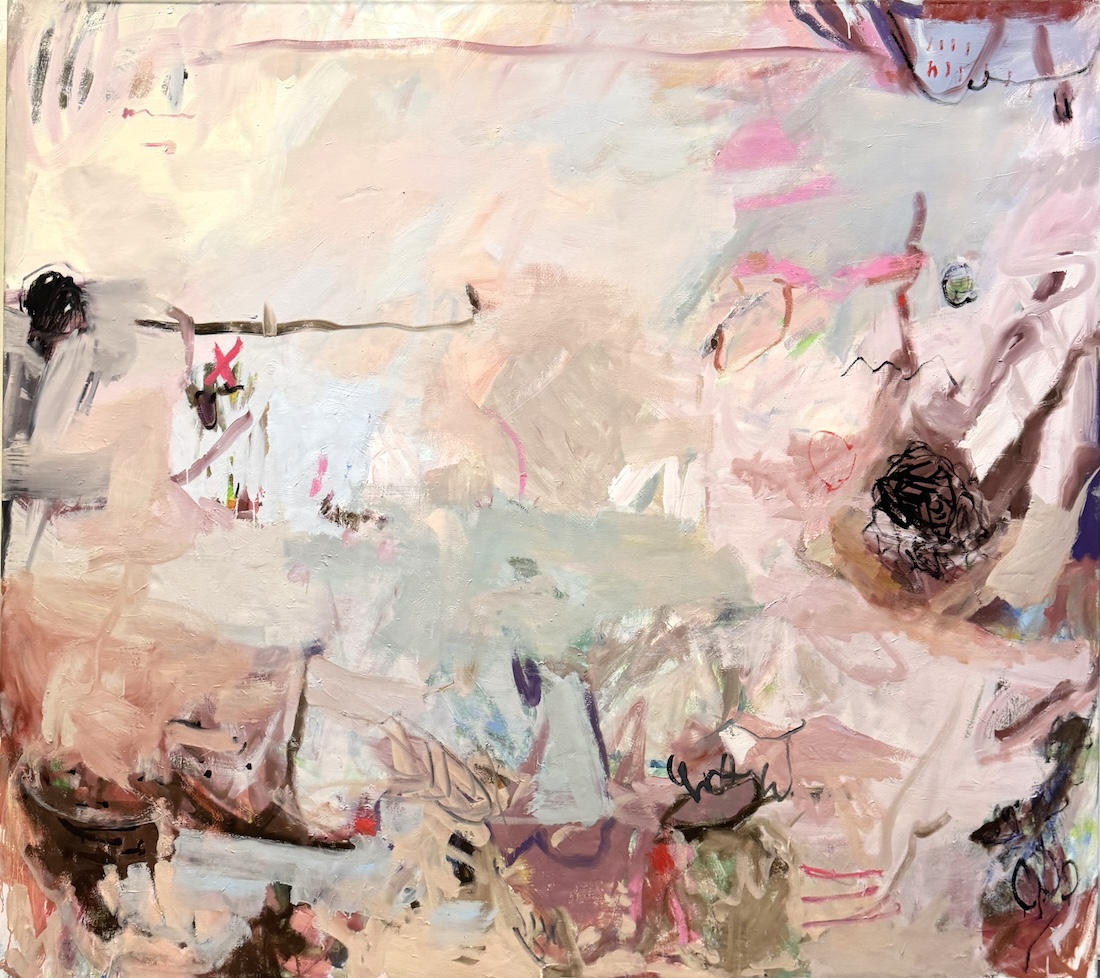
Favourite or most inspirational place ?
My studio is the most inspirational place. I have all the material I need, I have books and music, I have got wonderful light and I have lots of paintings in the make, as I always work in parallel with several paintings. So, of course, traveling, hiking, exploring new places can be very inspirational- but when it comes to the most inspirational place it is my studio. This is the place where I can start to transform my impressions of everyday life into painting.
What’s the best piece of advice you’ve been given?
‚Don’t do so much, things will happen in their own pace‘, is a very good advice I have been given. For me it was very valuable because I am an impatient person and want everything to happen at once. What can I do to have an exhibition, what can I do to sell my art? I have learned that all happens in the right moment, if I am patient enough to let it happen. By the way, the same is true for painting itself: also a painting needs time. Sometimes I am impatient, not knowing how to go on – but I want to do something. In these situations it is better to wait until the paintings calls me with an inspiration and allows my further interventions.
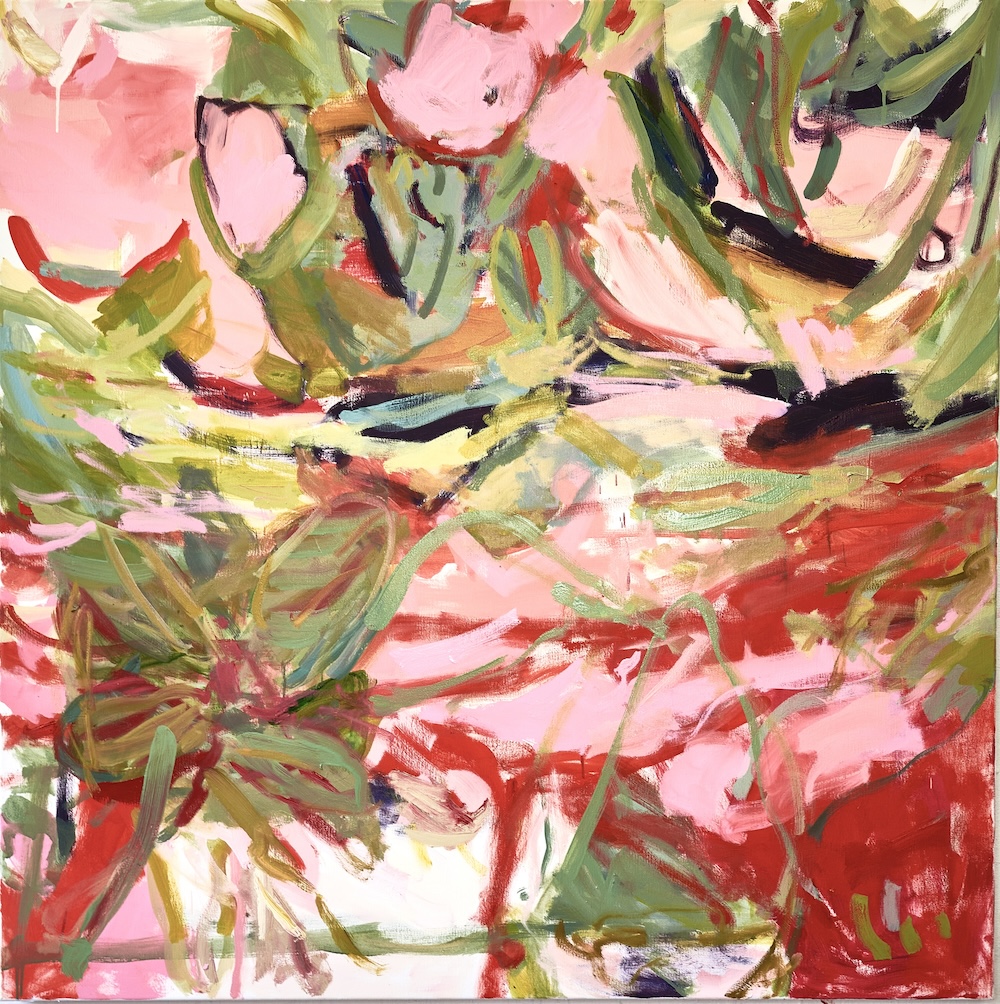
Professionally, what’s your goal?
My goal is to further grow and be further recognized. That means I don’t have new goals, just pursuing my path further and finding further support in galleries and perhaps also in a museum. My painterly goal is to allow myself painting large-scale even more, because huge canvasses can’t be controlled. So I have to give up the wish for control and just go into painting. Thus, there is an enormous freedom and peace in working large-scale.
Future plans?
I just want to go on creating – I have no well-shaped plans, because too many plans and goals are narrowing my view. I believe in letting things happen in their own pace – and be present when there is an opportunity I like to seize. I am very relaxed because even if no new opportunities would come along, all is fine. I have found a lot of ways and means to show and sell my art and I am grateful for that – more is fine but not necessary. This attitude allows me peace of mind.


